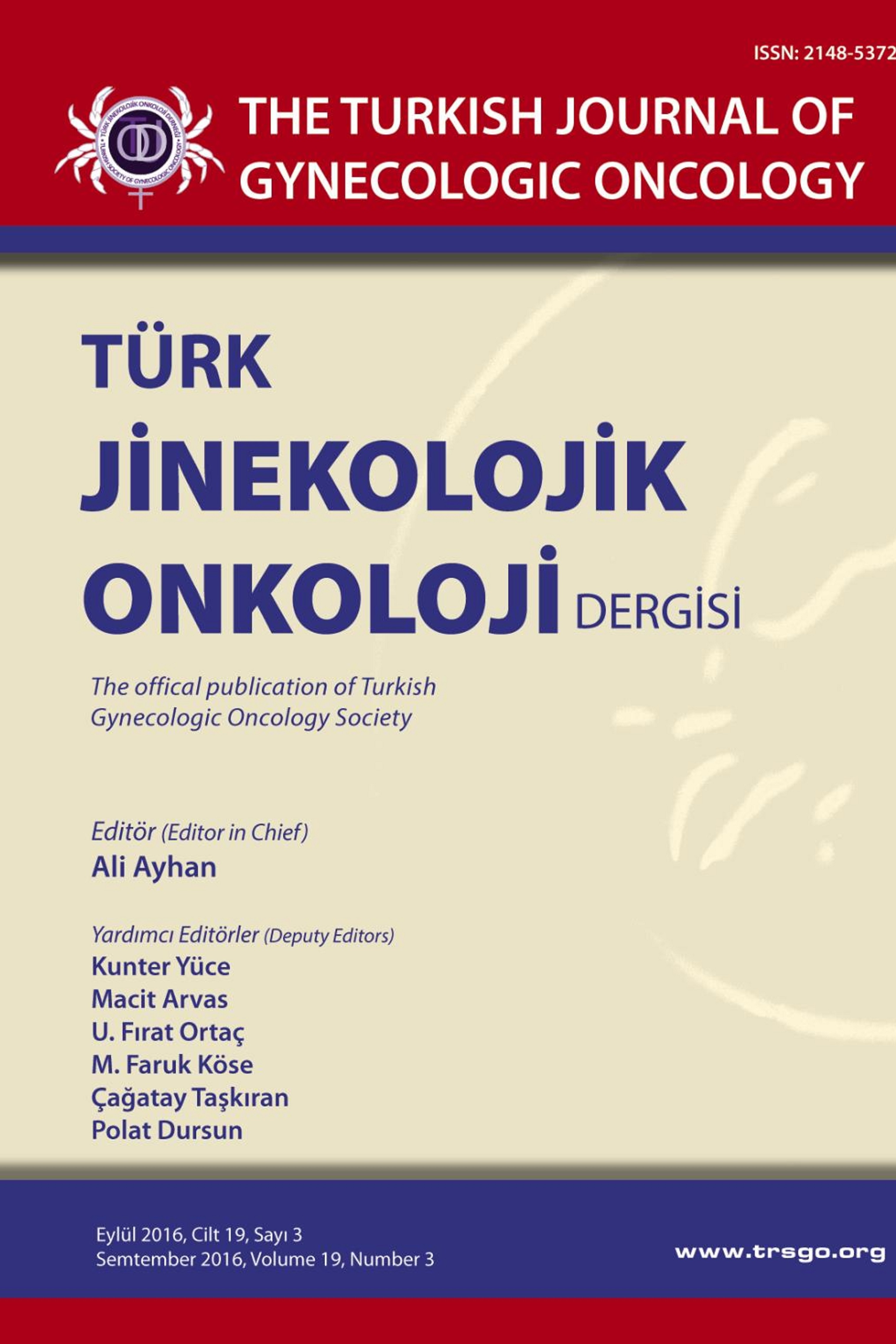OVERYAN MATÜR KİSTİK TERATOMLAR: 83 OLGUNUN ANALİZİ
Amaç: Overyan matür kistik teratomlu hastalarda klinik; cerrahi ve patolojik bulguların analizi. Materyal ve Metot: Toplam 83 olgu retrospektif olarak değerlendirildi. Bulgular: Hastaların yaş ortalaması 33±11.3 (14-67); %54.2'si nullipar ve %8.4'ü postmenopozaldı. Overyan kitle; hastaların %82'sinde insidental radyolojik bir bulgu olarak saptandı ve %67'sinde ultrosonografik görüntü matür kistik teratom için tipikti. Ortalama serum Ca 125 değeri 48.0 U/ml ve ortalama serum Ca 19-9 değeri 107 U/ml idi. En sık uygulanan operasyon metodu laparoskopi (%62.6) ve en sık uygulanan operasyon türü ise kistektomiydi (%62.6). Ortalama tümör boyutu 6.9 cm idi. Toplam 18 hastada intraoperatif frozen section çalışıldı ve iki hastada (%2.4) yassı hücreli kanser malign transformasyonu saptandı. Malign transformasyonlu hastaların biri postmenopozal dönemdeydi; ikisinde de kitle 10 cm'nin üstünde (14-12 cm) ve serum Ca 19-9 seviyeleri belirgin yüksekti (632 ve 240 U/ml). Sonuç: Matür kistik teratomlar sıklıkla yaşamın üçüncü dekadında görülen ve çoğunlukla insidental olarak saptanan tümörlerdir. Dikkatli bir ultrasonografi ile hastaların önemli bir kısmında matür kistik teratom için tipik görüntü saptanabilir. Serum tümör belirteçlerinin tanısal değeri düşüktür. Laparoskopi dermoid kistler için etkin ve güvenli bir cerrahi metottur ve olguların büyük bir kısmı için kistektomi uygun cerrahi seçenektir. Yaş; parite ve tümör boyutu operasyon özellikleriyle ilişkili faktörlerdir. Büyük tümör boyutu (> 10 cm)ve belirgin yüksek Ca 19-9 düzeyi olan hastalarda malign transformasyon riskinin olabileceği akılda tutulmalıdır.
Objective: To evaluate clinical, surgical, and pathological features of patients with ovarian mature cystic teratomas. Material and methods: A total 83 cases were evaluated retrospectively. Results: The mean age was 33±11.3 (14-67) years, 54.2%of patients were nulliparous, and 8.4%of patients were postmenopausal. Ovarian mass was found in %82 of the patients as an incidental radiologic finding and in %67 of the patients, ultrasound were compatible with mature cystic teratoma. The mean serum CA125 level was 48.0 U/ml and the mean serum CA 19-9 level was 107 U/ml. Most common operation metot was laparoscopy (62.6%) and the most common operation type was cycstectomy (62.6%). The mean tumor diameter was 6.9 cm. Intraoperative frosen section studied in 18 patients and revealed two (2.4%) malignant transformation to squamous cell carcinoma. One of the patients with malignant transformation was postmenopausal. The masses were have a diameter greater than 10 cm (14- 12 cm) and serum CA19-9 levels were significantly high (632 ve 240 U/ml) in both of the patients with malignant transformation. Conclusion: Mature cystic teratomas mostly seen in third decade of life and they usually diagnosed incidentally. In most of the patients, a typical image for mature cystic teratomas could be detected with a careful ultrasound examination. Diagnostic values of serum tumor markers are limited. Laparoscopy is a safe and effective surgical method to management of patients with ovarian mature cystic teratomas and cystectomy is the appropriate procedure for the vast majority of the cases. Age, parity, and tumor size are related with operative charectersitics. The risk of malignant transformation should be kept in mind especially in patients that have relatively big (> 10 cm) masses with markedly elevated CA19-9 levels.
